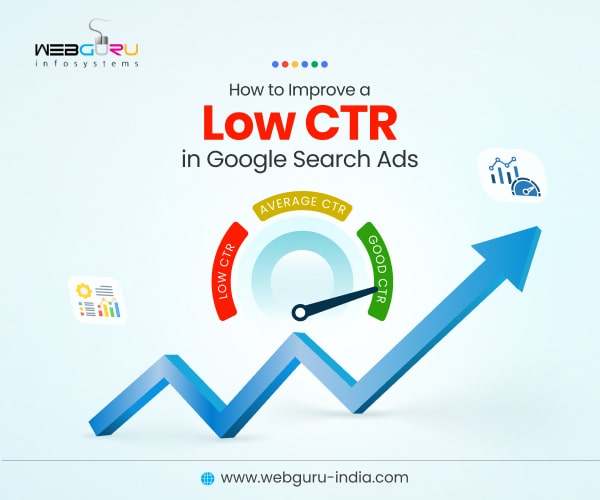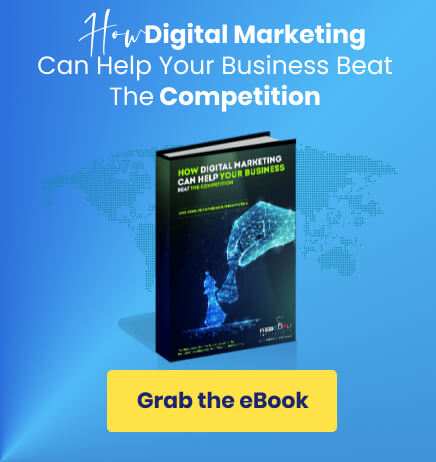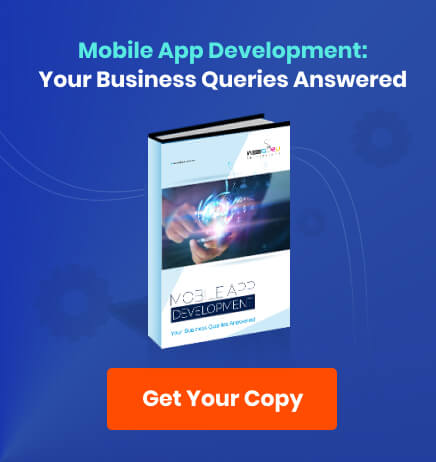Home Blog Digital Marketing Services Why Your Google Search Ads CTR Is Low — And How to Fix It
Why Your Google Search Ads CTR Is Low — And How to Fix It
- 14 May / 2025
- 2,033 views
- 9 Min Read

Not getting enough clicks on your Google search ads? It can be due to poor ad copy, irrelevant keywords, mismatched landing pages, or weak targeting. Even the reason can be as simple as not using ad extensions, and it can significantly hurt your performance. Hiring expert digital marketing services is effective for companies to spot and fix these issues fast. If your web ads aren’t getting the required attention they deserve, you should rethink your strategy.
It’s frustrating to witness that your ad campaign is doing nothing apart from wasting thousands of dollars. Many marketers wonder why their Google Search Ads aren’t getting enough clicks even after hours of setting up campaigns.
It’s tempting to blame algorithms or competition! However, the reasons can be simple and fixable. When a company hires the right digital marketing services early on, it can avoid costly missteps. There are significant, practical ways that can help lift your CTR and generate a better return from your ad budget.
Click-Through Rate Isn’t Just a Number!
It’s a Signal That Your Ad Is or Isn’t Working.
CTR, or click-through rate, indicates how frequently users click on your ad after viewing it. It’s a clicks-to-impressions ratio, expressed as a percentage. If your ad is viewed 1,000 times and clicked 50 times, that’s a 5% CTR.
The higher your CTR, the better your ad performs. But there’s more. A good CTR informs Google that your ad is relevant, which can decrease your cost per click and enhance your ad ranking. A poor one, however, can drown your visibility and burn your budget.
Possible Reasons Behind Low CTR and How You Can Fix It!
Being a leading digital marketing company in Kolkata, India, we have solid experience in running ads and generating value for our clients. Some of our clients reported they tried running ads, but that wasn’t helpful. While examining their ad campaigns, we found some errors, and let’s discuss them in the below.
1. Poor Keyword Targeting
Most low-performing ads start with the wrong keywords. When ads appear for search terms that don’t align with user intent, people skip right over them. For example, someone searching “how to fix a cracked phone screen” isn’t in the mood to purchase a new phone. But some ads attempt to sell one anyway. That mismatch costs clicks.
A more effective strategy is targeting commercial intent terms. Consider what individuals are looking for when they’re ready to purchase. Strings such as “cheap running shoes near me” or “small business CRM” indicate intent.
Steer clear of too generic or strictly information-based terms. Another effective technique? Leverage local and branded terms. Local terms can attract highly motivated shoppers. Branded searches indicate high trust and clear objectives. Use them wisely, and your CTR will appreciate it.
2. Not Using Negative Keywords
Negative keywords inform Google when not to display your ad. Without them, your ad could appear where it doesn’t belong. For example, suppose you sell new laptops. If someone searches for “used laptops for $200 or less,” and your ad displays, they’re not likely to click. Even if they do click, it’s likely a wasted click that won’t convert.
By including “used” and “refurbished” as negative keywords, you avoid this mismatch. This limits your reach — but positively. You get the right people. And that accuracy can boost your CTR. Unsure where to begin? Scroll through your search terms report. It reveals exactly what prompted your ads. You’ll see hints to refine your list.
3. Ad Fatigue
Repetitive exposure can make your audience unresponsive. The targeted audience may feel bored if you are not regularly updating your ads. If not improved immediately, you will notice a drop in your Google Ads performance.
In order to combat ad fatigue, be ready with a diverse range of ad creatives and regular updates. In order to update ads, you can try introducing fresh offers, changing visuals, and exploring ad formats to keep your audience engaged and intrigued.
The goal should be maintaining relevance over time, preventing user burnout, and continuing interest in your brand and products.
4. Ads That Blend In
Consider how quickly people scroll through the web. You have seconds — perhaps fewer — to grab their attention. Plain, generic copy won’t work. A headline such as “Get Great Deals” is a snooze. But a headline such as “Save 40% on Designer Watches Today” brings a user up short. Numbers and scarcity command attention.
People want simplicity. Use the keyword in your title and make it personal or value-driven. And don’t textually overload your ad. Make it readable and concise. Split it up into bite-sized phrases.
Headlines are most important, but the description needs to pack a punch too. It needs to get people curious enough to click. This little tweak can change your CTR in major ways.
Also Read: How to Regain Lost Rankings After a Google Algorithm Update
5. Not Using Compelling CTAs
Calls to action influence user action, but most ads don’t have strong CTAs. Without strong CTAs, potential customers are left without direction on what to do next. Users require clear instructions on what to do after seeing your ad. The missing piece introduces friction in the decision process that usually leads to abandonment instead of engagement.
Effective CTAs induce a sense of urgency and communicate clearly what value proposition comes next after a click. Use active words like “discover,” “get,” and “find” instead of passive sentences.
The CTA must offer immediate satisfaction or trouble solution. “Solve Your Marketing Problems Today” is better than “Learn About Our Marketing Solutions.” Its position is crucial too. Place action-oriented phrases in headlines as well as in descriptions for optimum effect. Use multiple CTAs in the course of the ad to drive clicks without appearing monotonous.
6. Use of More Robotic Texts
Cold, mechanical ads don’t work. Emotion motivates action. A line like “Regain Your Confidence Today” is more powerful than “Purchase Hair Restoration Gel.” Effective ads appeal to emotions — not facts.
This does not mean you have to be overly dramatic. Small adjustments can make warmth and trust. “Sleep Better Tonight” or “Make Mornings Easier” are gentle but strong. These changes can increase CTR by introducing a human element. A study by Nielsen states that emotionally charged content produces a 23% boost in sales results. So, first understand how your product makes individuals feel. Then mirror that in your ad.
7. Ignoring Ad Extensions
Ad extensions increase your visibility on search results pages without extra cost. The lack of utilization of these features is an opportunity lost for greater visibility and relevance. Your competitors probably make use of extensions to take up more space and offer more information that drives clicks. The lack of these components makes your ads look less meaningful and credible by comparison.
Google offers many extension types that play various roles. Sitelinks give instant access to particular pages on your site. Callout extensions highlight special deals or key selling points. Structured snippets display certain features of your products or services. Location extensions help local businesses with nearby customers. Price extensions help reveal prices ahead of time for clarity.
8. No Room for Dynamic Keyword Insertion
Dynamic keyword insertion (DKI) inserts the search term directly into your ad text. When used effectively, it makes ads seem more relevant. However, if it is overused, it may generate robotic or mismatched results.
DKI is most effective when used with clean copy. It’s best suited for mass campaigns with strong themes. Nevertheless, don’t use it to do the thinking for you. A fine blend of automation and human touch can help get more clicks. Research shows that ads with moderate use of DKI had a 15% higher CTR than those without — or with excessive use.
9. Put Some Special Offers
Everyone likes to get some deals! However, too many ads can bury their promotions in small print. So, you need to bring offers upfront. If you are offering anything specific like a flat 20% off, free shipping, buy 1 get 1, etc., put that in the headline. Viewers sometimes just scan, not read. So, you need to give them a reason to pause.
Also, remember that numbers catch the eye, and you can use them wherever possible. For example, a headline like “Get 2 Months Free—Limited Offer” will outperform “Sign Up for Our Service” almost every time. It’s clearer. It’s tempting. It works.
Where Do You Stand in CTR Benchmarks?
Curious whether your CTR really is low? Let’s compare. Industry-wide, the average CTR on Google Search Ads is roughly 4-6%. For some industries, like real estate or travel, 7-9% is a more common expectation. Arts and entertainment may even see 11% or better.
So if your ad’s under 3%, that probably is underperforming. Don’t panic, benchmarks can vary! The key is observing your trend over a period of time. Is it getting better? Are tweaks benefitting? Keep testing.
Sometimes low CTR is not about copy or keywords. Sometimes it’s about ad quality score, bidding strategy, or campaign structure. That’s when hiring experts makes sense. A trained digital marketing agency like Webguru Infosystems can review your account and find problems you overlooked. They will optimize your targeting, repair quality issues, and recommend copy that converts.
It saves time if you work with pros. Most importantly, it increases returns. Companies attempting to do it all internally end up wasting budget on trial and error. The right agency has done this hundreds of times. They’ve already seen what works — and what doesn’t.
Conclusion
Low CTR on Google Search Ads does not imply that your product is inferior or that your audience is not interested. Generally, it simply implies that your ad is not saying the right thing to the right person at the right time.
With more precise keywords, more concise copy, and emotional resonance, you can shift your results overnight. Use negative keywords, promotions, and a CTA that addresses actual needs, and your CTR will increase.
Don’t be satisfied with clicks that don’t convert. Target relevant, meaningful ones that bring growth. And if it all feels too much, remember — hiring digital marketing services can help reboot your campaigns.
With new vision and specialized techniques, your ads can start working as they’re meant to. Ultimately, success isn’t just about being viewed. It’s about being clicked — for all the right reasons.

Sujata Bhattacharjee
Sujata Bhattacharjee is a versatile content writer with a passion for crafting engaging narratives. Her work blends creativity with expertise, captivating readers across diverse topics effortlessly.

-
1000+
Happy
Clients -
25+
Countries
Served -
19+
Years of
Trust







